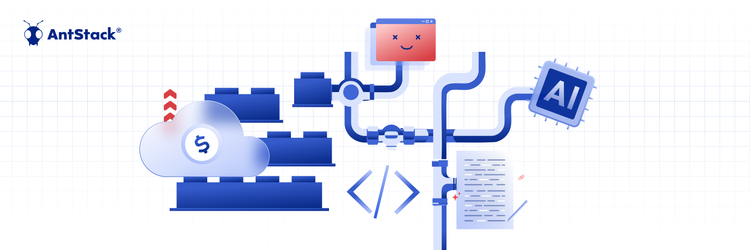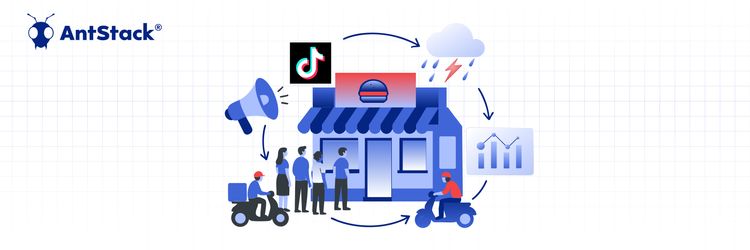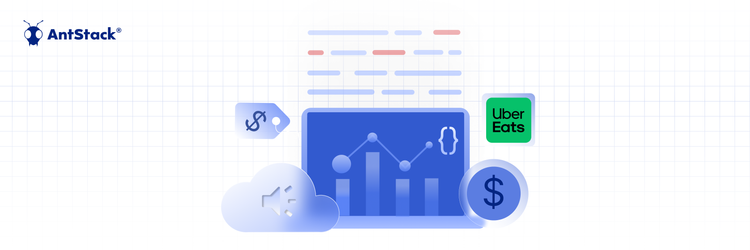Rethinking Cloud Spend: Modernization Over Short-Term Cuts
When discussing their interest in creating serverless and cloud-native applications, developers frequently wonder how they would interact with the platform. It's crucial to ask this question since happy, productive engineers who can release software quickly provide a better overall developer experience.
The topic of serverless architecture has been the subject of several online resources, including webinars, books, websites, articles, speeches, projects, and conferences. The concept of a "serverless" architecture has altered the software development, distribution, and use paradigm. This article will define "serverless," discuss its definition and examine the current state of, the potential for, and the potential future of serverless architecture in software development.
What is Serverless Development?
The term Serverless suggests that servers are not used in the system, but that's not the case. Serverless describes an application development and deployment approach in which no servers are directly involved in the process.
Modern software development relies heavily on serverless computing. Eliminating the need to monitor, upgrade, and otherwise maintain servers is a relief.
Managing servers, releasing code, and adding/removing resources are typically labour-intensive processes that require trained professionals' expertise and take up significant amounts of time. This is now simplified because of serverless. It has freed developers from backend management, allowing them to concentrate on the product rather than the infrastructure that supports it.
Features Serverless Architecture Provide For Developers
1. Multiple Programming Language
When creating serverless functions, programmers can use any language they like. Python, PHP, C#, Java, and F# are some programming languages that work well with the service. The programming model can be used for a wide range of tasks by developers, including inter-server communication, workflow orchestration, and the creation of an HTTP-based API.
2. Computing On-Demand
Serverless functions' compute on-demand delivery methodology guarantees that customers' needs are met with the appropriate allocation of resources. The user's cloud service provider typically manages the resources, as user provisioning and administration are not required.
3. Super-Intuitive User Interface
You can utilise the intuitive online interface or your favourite Integrated Development Environment (IDE) to create and debug your serverless Functions. It provides an easy-to-use browser-based interface that can react to events from several sources, including HTTP requests, Timers, Events Hubs, Table Storage, Azure Storage, and more.
4. Workflow in Serverless Functions
Though it's desirable to keep serverless functions stateless so that you don't have to manage resource sharing and distribution, there may be situations when management needs arise.
A durable Function is an extension to the primary runtime that can introduce a new way of working (such as scheduling a job to be completed or orchestrating a workflow). With serverless Functions, you may utilise the result of one function as the input for another and pick up execution right where it was paused or ended.
What Are The Benefits of Using Serverless Architecture?
Many important advantages to the IT industry can be attributed to the abstraction of the serverless layer, which in turn leads to happier development teams.
1. Agility
Typically, developers handle infrastructures like servers, databases, and networks. The development time and operations cost increase as a result. Previously, manual resource allocation and scaling were required, but with serverless, this is no longer the case, allowing for far quicker application release cycles. Serverless computing facilitates rapid, automated code updates and deployments, reducing the burden on IT departments.
2. Reduced Deployment Complexities
Maintenance of infrastructures is a time-consuming, boring, and routine process. As most IT organisations employ dedicated network administrators to set up and maintain the underlying infrastructure, the fact that a serverless system needs no such oversight is a big boon to the industry.
3. High Scalability
By automatically increasing or decreasing its capacity in response to demand, resources are allocated on the fly to carry out certain tasks. Due to its scalability and simplicity, serverless has been hailed as a potentially useful framework for software creation. Moreover, developers do not need to ensure system stability and availability as with server-based systems.
4. Cost-Effective
The "pay as you go" policy ensures that you only spend money on what you use. Running servers in an always-on configuration incurs significantly additional expenses. Hence, developers should only pay for what they use instead of "always on" availability, which is charged even when your resource is idle, or your code is not executing.
5. Security
With serverless, you can forget about DDoS (Distributed Denial of Service) attacks, OS dependencies, bots, and scrapers, among other security concerns. It is more stable, secure, and well-organised because of the serverless service provider's insistence on runtime validation and authentication.
Conclusion
With serverless functions, creating new applications is a breeze. This concept is a big improvement over the standard app development process, which is quite expensive, takes a long time, and necessitates complicated IT infrastructure.
The serverless design of serverless functions allows you to focus on writing and deploying high-quality code without worrying about the underlying system's capabilities or limitations.









